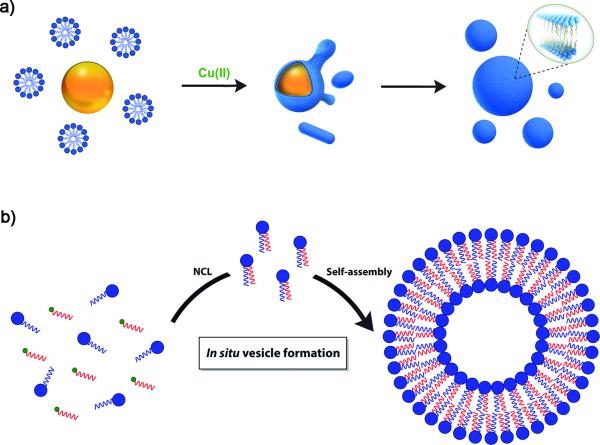Figure 2.
De novo self-assembly of phospholipid membranes. a) Membrane assembly driven by a copper-catalyzed biomimetic reaction. Azide oil droplets (orange) interact with alkyne lysolipid micelles (blue) in aqueous solution to form an emulsion. Copper catalyst (green) addition triggers azide-alkyne coupling via bioorthogonal triazole formation, which occurs at the interface between insoluble azide oil droplets and the alkyne-containing aqueous solution. This azide-alkyne cycloaddition spontaneously drives de novo phospholipid vesicle formation. b) Spontaneous vesicle assembly induced by NCL-based phospholipid synthesis.

